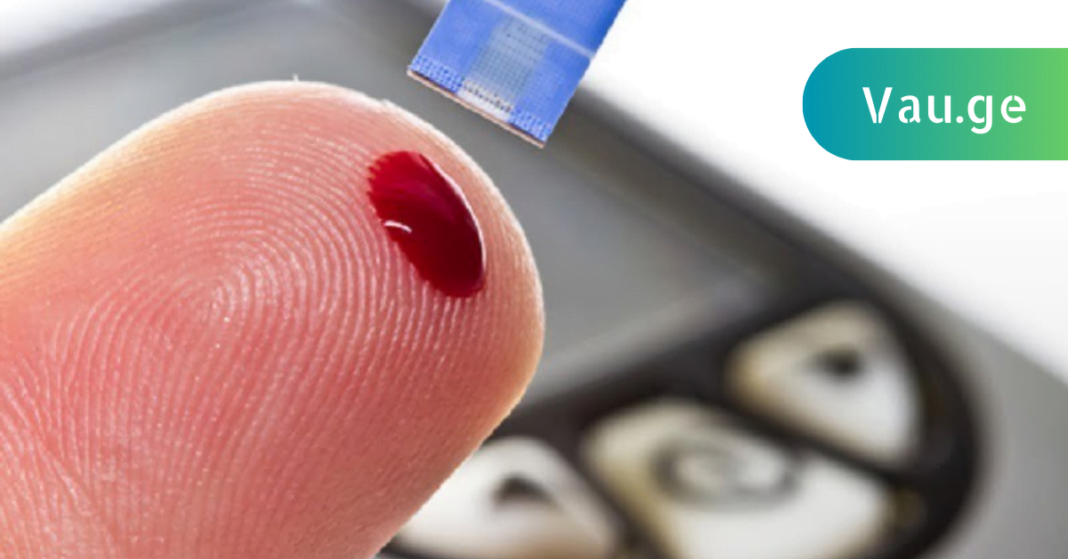In this article, we’ve decided to introduce you to the 14 most common signs that may indicate elevated blood sugar levels. It is important to understand that high blood sugar (also known as hyperglycemia) doesn’t necessarily mean that you have diabetes. However, it is one of the warning signs and should not be ignored.
Elevated blood sugar levels can be a cause for concern, and paying close attention to the signs your body gives you can help prevent more serious health complications in the future. That’s why doctors strongly recommend monitoring blood sugar changes in a timely manner, even if diabetes has not yet been diagnosed.
Here are the 14 most common symptoms of high blood sugar that you should be aware of:
- Frequent or recurrent infections
- Persistent thirst throughout the day
- Nerve problems, including tingling or numbness
- Dry and itchy skin
- Constant dry mouth
- Slow healing of wounds and cuts
- Impotence or sexual dysfunction in men
- Inability to concentrate or focus
- Blurry or distorted vision
- Rapid weight gain, especially abdominal fat
- Unexplained hunger or excessive appetite
- Frequent urination, especially at night
- Feeling constantly tired or fatigued
- Abdominal discomfort or digestive issues
Don’t panic if you experience one or more of these symptoms—it doesn’t automatically mean you have diabetes. But they are signs worth checking out with a healthcare provider. High blood sugar can also be temporary or caused by other conditions.
Managing High Blood Sugar Without a Diabetes Diagnosis
Even if you don’t have diabetes, elevated glucose levels should be addressed. One effective method is through diet. You can reduce certain symptoms by paying attention to the glycemic index (GI) of the foods you eat. The GI measures how quickly carbohydrates in food raise blood sugar levels.
The treatment of diabetes depends on its type and diagnosis.
Managing it usually starts with a healthy, balanced diet. Medications and therapeutic interventions may also be prescribed, depending on the patient’s age, the type of diabetes, any complications, and co-existing conditions. Your doctor will tailor a plan that suits your needs.
After every meal, your blood sugar naturally rises. In a healthy body, these levels should return to normal within two to three hours. However, in some cases, a mild increase in fasting glucose can occur without diabetes. This might happen due to pregnancy, inflammation, a recent heart attack, or excessive carbohydrate consumption the day before.
Still, any rise in glucose levels—whether temporary or unexplained—should be checked again. Early detection of abnormal patterns can help you avoid the development of full-blown diabetes.
Foods to Watch Out For
When adding fruits and vegetables to your diet, it’s essential to consider their glycemic index. Some otherwise healthy foods can still raise blood sugar levels. For example, many fruits and vegetables commonly consumed in Eastern Europe and Russia have high GI values:
- Boiled beets – GI 99
- Boiled, baked, or fried potatoes – GI 95
- Cooked carrots – GI 85
- Raisins – GI 65
- Bananas – GI 60
Healthier Eating Habits to Support Blood Sugar Control
The healthiest food preparation methods are steaming, boiling, baking, or eating raw. When cooking, replace animal fats with plant-based oils. Incorporate foods that are rich in fiber and have low glycemic indexes.
- Recommended vegetables: Cabbage, beans
- Best berries: Blueberries – they help lower glucose, stimulate insulin production, and normalize pancreatic activity
- Herbs and aromatics: Garlic, onions, celery, and fresh greens
- Smoothies and juices: Try vegetable-based smoothies and fresh juices instead of sugary beverages
- Beverage alternatives: Instead of coffee, consider chicory drinks. Instead of black tea, switch to herbal or green teas
Another key strategy is to eat frequently but in small portions—ideally five times per day. This helps protect your pancreas from being overworked, which can help stabilize your glucose levels throughout the day.
Conclusion
Monitoring your blood sugar doesn’t have to be overwhelming. By recognizing the early signs and adjusting your lifestyle accordingly, you can maintain balanced glucose levels and avoid serious health issues. If you notice any of the 14 signs mentioned above, it’s wise to consult a doctor and get tested. Prevention, after all, is always better than cure.


















